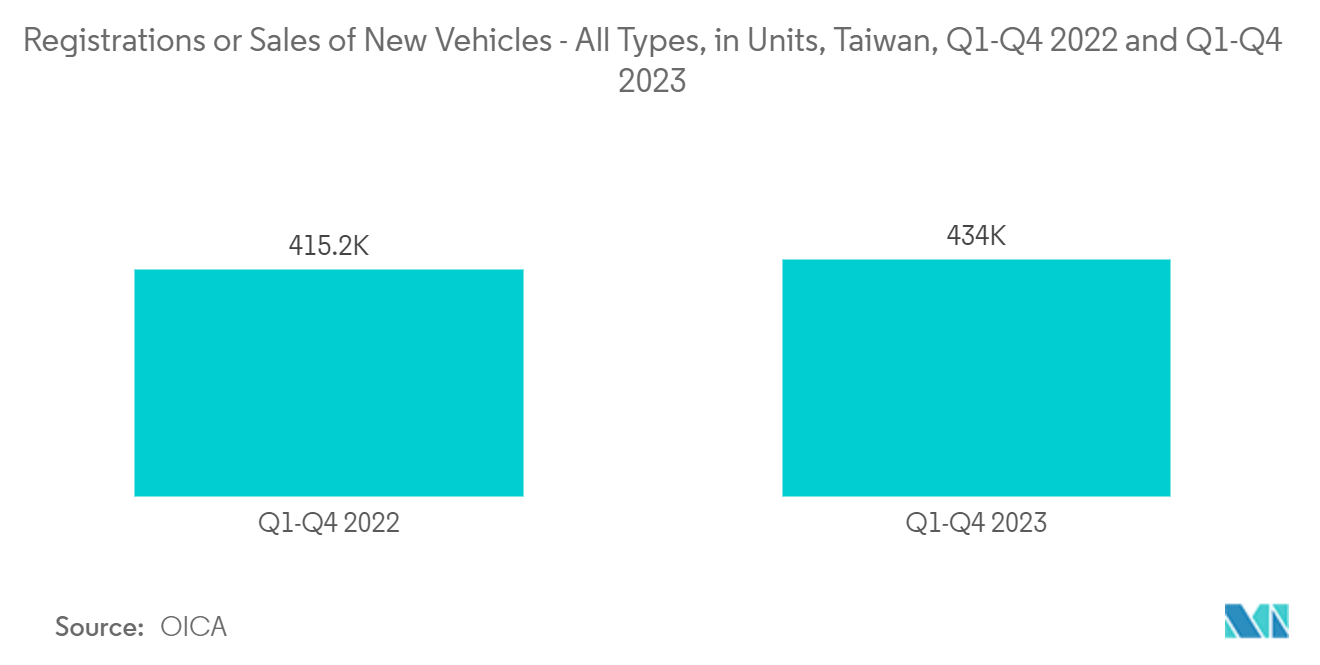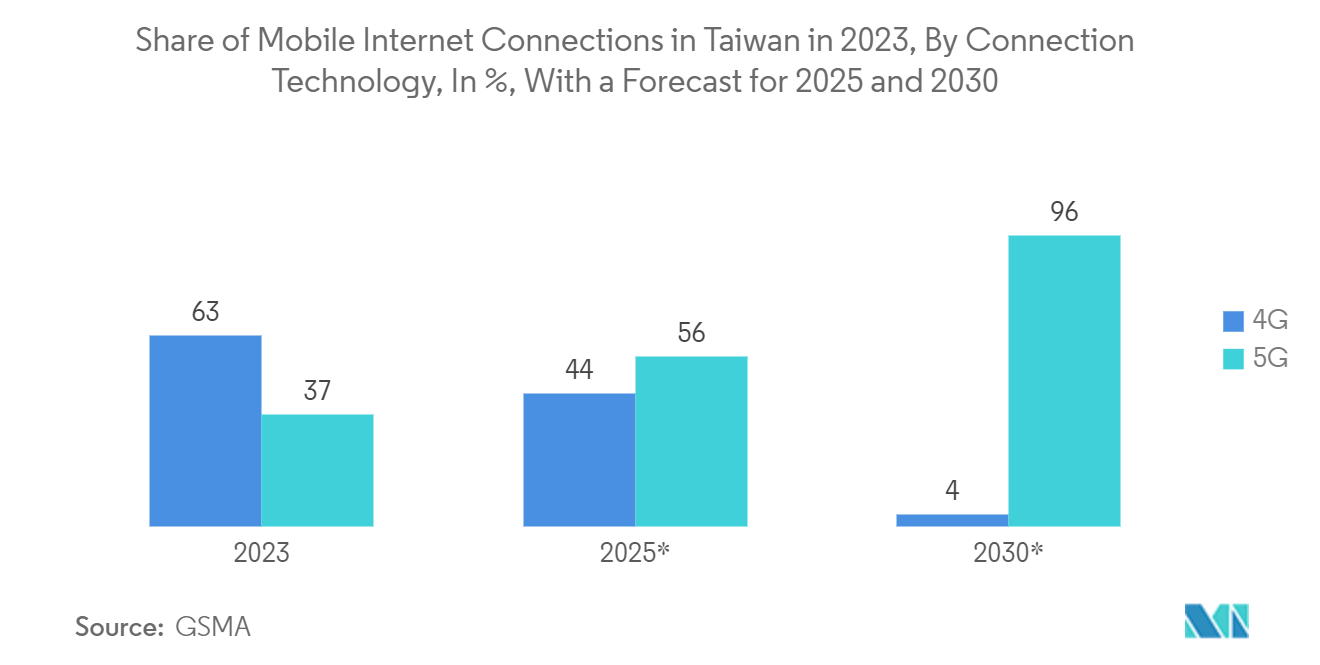Market Trends of Taiwan Optoelectronics Industry
Automotive Industry is Expected to Witness a Significant Growth
- Optoelectronics are progressively utilized in cars to automate vehicle operations such as headlights, brakes, and other safety systems. Optical-electronic devices are slowly integrated into vehicle safety features such as night vision systems. These systems utilize active or passive infrared technology to enhance a driver's visibility beyond the range of headlights, particularly in unfavorable driving conditions. Laser diode technology is used to implement LiDAR systems for autonomous driving.
- The surging demand in the automotive industry, specifically with the adoption of electric vehicles in Taiwan, is expected to boost the adoption of optoelectronic devices, further driving the market studied. Starting July 1, 2024, the Taiwanese government would introduce dedicated insurance plans for electric vehicles (EVs), mirroring the rates for traditional gas-powered vehicles. The government has rolled out new insurance schemes designed for Electric Vehicles (EVs), ensuring that owners of traditional gas-powered vehicles are no longer burdened with subsidizing the repair expenses of EVs.
- Automakers are phasing out old incandescent light bulbs and replacing them with LED lights for interior and exterior applications, offering advantages like flexibility in installation and unique lighting designs. LED technology, including Micro LED displays, is being deployed for automotive applications, such as head-ups and transparent displays, offering new opportunities for LED makers in the automotive industry.
- In July 2024, Ennostar, a Taiwan-based company, is pioneering Micro LED technology for automotive use. It's actively collaborating with partners and intensifying its R&D efforts to gear up for mass production. The company is set to notably enhance the uniformity of COW this year to accelerate its production timeline, surpassing 2023's standards. Ennostar predicts that as the demand for autonomous vehicles and smart cockpits rises, Micro LED technology is set to emerge as a leading display choice for upcoming vehicles.

Image Sensors are Expected to Hold a Significant Market Share
- Image sensors play a vital role in optoelectronics by enabling cameras and imaging devices to transform photons into electrical signals, which can then be analyzed and manipulated. The first digital cameras used charge-coupled devices (CCDs) to facilitate the movement of electrical charge through the device for modulation. However, modern cameras predominantly use complementary metal-oxide-semiconductor (CMOS) sensors due to their low power consumption, high integration, and compatibility with standard CMOS fabrication processes.
- With the surging demand for high-definition image-capturing devices in various industries, CMOS technology has experienced a high adoption rate. CMOS technology provides a faster shutter speed while delivering high-quality images. In September 2023, Sony Semiconductor Solutions Corporation (SSS) announced the IMX735, an advanced CMOS image sensor designed for automotive cameras. With an impressive 17.42 effective megapixels, this sensor establishes a new standard in the industry.
- Incorporating cameras in smartphones has led to a noticeable increase in image capturing, coinciding with the rise in smartphone penetration. According to BOFT (Taiwan), Taiwan's mobile phone imports surged to approximately USD 1.19 billion by 2023. Over the past decade, Taiwan transitioned from being a mobile phone exporter to a significant importer. These factors are set to drive the market for image sensors. Due to the increasing need for high-quality image-capturing equipment in various industries, there has been a notable rise in the use of CMOS technology.
- While companies like Sony, Samsung, SK Hynix, Vishay Intertechnology Inc., and ST have long histories of R&D investments, relatively new companies are also keeping pace regarding the levels of technology innovations. In June 2024, Samsung Electronics introduced three advanced mobile image sensors designed for primary and secondary cameras in smartphones. These sensors include the ISOCELL HP9, the ISOCELL GNJ, and the ISOCELL JN5. The ISOCELL HP9 boasts 200 million pixels, each measuring 0.56 μm, within a 1/1.4-inch optical format.


